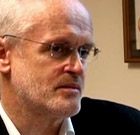John Strang on the history of drug treatment and the growth of drug clinics
Can’t see the video?
You need to upgrade your Flash Player to version 8 or newer.
Click HERE to get it.
You need to upgrade your Flash Player to version 8 or newer.
Click HERE to get it.
VIDEO NUMBER:
285
CATEGORY:
History And Historical Events
DATE ADDED:
01-04-2010
DESCRIPTION

 Howard Parker on the Merseyside Heroin Epidemic
Howard Parker on the Merseyside Heroin Epidemic